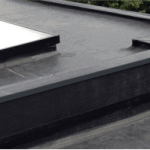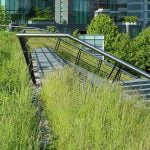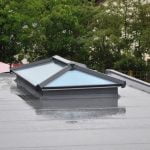
Most architects will understand that designing a flat roof demands accurate precision to evade potential pitfalls. However, if you’re not used to rubber roofing or flat roof systems, you’re in luck. As the flat roof installation experts, we’ve included the common oversights in our guide below that plague builders in the pursuit of creating structurally sound and resilient flat roof designs. Pay particular attention to the slope.
Inadequate sloping fosters water accumulation, inviting future leaks and ponding and affecting the roof’s integrity and longevity. But it’s not just adequate sloping to bear in mind. It would be best to consider other factors like insulation, drainage, material selection and regulatory standards.
Common Mistakes When Designing Flat Roofs
By avoiding these common problems and teaming up with experienced flat roof professionals, architects and builders alike can ensure a successful design and the installation of a durable, efficient and long-lasting flat roof.
Tips from roofing experts

- Inadequate sloping: As mentioned above, flat roofs, despite their name, are not completely flat – and they require a slight slope to ensure proper water drainage. One common mistake in a flat roof design is not providing enough slope, which leads to ponding water that can cause leaks, structural damage and premature deterioration.
- Poor drainage solutions: Improper or insufficient drainage systems can cause the water to pool or accumulate on the roof’s surface, which can result in water infiltration, increased weight loads and, over time, structural issues.
- Improper waterproofing: Failure to install adequate waterproofing membranes or opting for inferior materials can also lead to leaks, mould growth and damage to the building’s interior.
- Inadequate insulation: Flat roofs are more prone to heat loss and gain, making insulation essential to improving the property’s energy efficiency and comfort. Failure to plan and install sufficient insulation can lead to higher energy costs, thermal bridging, and condensation issues within the building envelope. See installation tips.
- Not building the flat roof to code: Building codes and regulations require specific requirements for a flat roof design, such as structural integrity, fire resistance, and wind uplift resistance. Failure to comply can result in costly fines, project delays and safety hazards.
- Incorrect choice of material: Choosing the wrong roofing material for a flat roof can compromise its performance and durability. Factors like UV radiation exposure, climate, foot traffic, and maintenance requirements make choosing the right roofing material essential for ensuring its survival. Explore EPDM as a solution.
- Overlooking structural considerations: Flat roofs must support various loads, such as snow, equipment, and maintenance traffic. Failure to adequately design your roof’s structure to accommodate all loads can result in structural failure and collapse.
- Ignoring thermal movement: Flat roofs are subject to thermal expansion and contraction, which cause materials to warp, crack, and separate over time. Ensuring correct detailing and considering this movement is essential to preventing damage and sustaining the roof’s integrity.
- Inadequate ventilation: Bad ventilation in flat roof assemblies leads to moisture buildup,
mould growth, deterioration of roofing materials and decreased indoor air quality. Proper ventilation design is essential to prevent these issues and maintain a healthy building environment.
Read next: How to avoid installation errors with EPDM.











